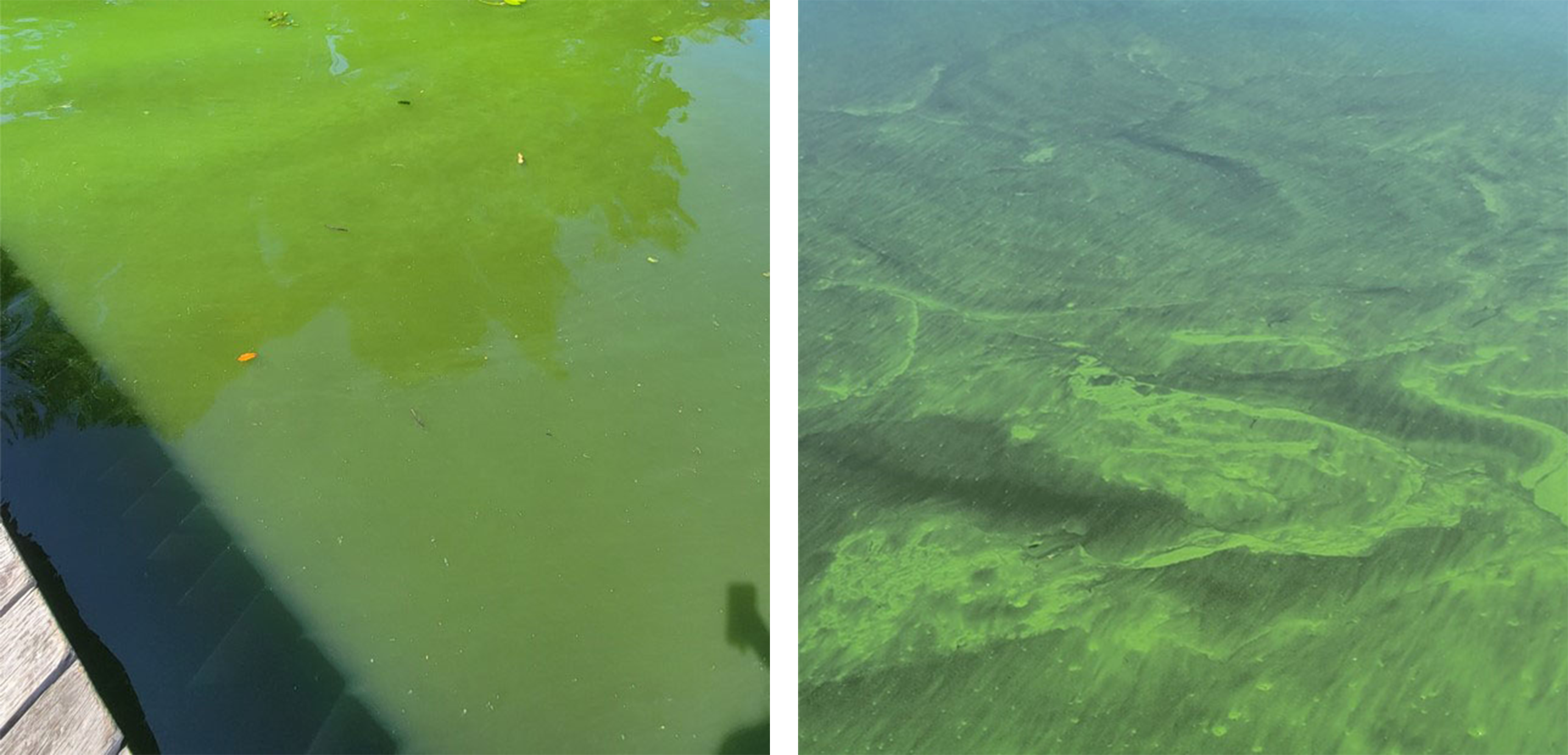Highlighting SCDES’s Harmful Algal Bloom Team
Thursday, Oct 10, 2024

If you have ever noticed a green film on a lake and wondered what it was and can it make you sick, our Harmful Algal Bloom (HAB) Team has the answer!
What Causes HABs?
“An algal bloom is characterized by the rapid or excessive growth of algae or cyanobacteria,” said Matt Baumann, Aquatic Science Director with the SCDES Bureau of Water. “This rapid growth can cause foams, scums or thick layers of algae on the surface of water. Blooms can have bad odors and cause water to appear green, red, brown, blue or can’t even be seen.”
“Some blooms are formed by species that can produce toxins,” he said. “When these blooms produce toxins that can affect the health of people, animals and the environment, they are known as harmful algal blooms or HABs.”
In freshwater environments, most HABs are caused by cyanobacteria and are more likely to develop in warmer months from late spring to early fall. Besides warm temperatures, other major factors influencing the growth of HABs include sunlight, slow-moving water and nutrient pollution.
Nutrient pollution occurs when chemicals such as nitrogen and phosphorus from treated wastewater, animal manure, chemical fertilizers and pet waste enter local waterways. Yard debris and certain soaps and detergents containing nitrogen and phosphorus can contribute to nutrient pollution if not properly used or disposed.
To learn more about nutrient pollution, visit the EPA website.

How Does SCDES Monitor HABs?
The core HABs team is Emily Bores and Taylor Shearer of the Aquatic Resource Monitoring Section within the Aquatic Science Division. The team is currently investigating and monitoring potential HABs in Lake Greenwood, Lake Wateree and Lake Rabon.
“Since 2018, we’ve identified a number of reservoirs that are more likely to produce HABs,” Matt said. “In those lakes, we proactively monitor cyanotoxins monthly near drinking water intakes to identify potential algal issues. We’ve also established good relationships with the managers of those lakes to get out ahead of algal issues and to communicate concerns to stakeholders.”
During the last six years, Emily and team have built up a robust program with the following goals:
- Continue collecting baseline data of cyanotoxin distribution in state reservoirs and estuaries;
- Monitor drinking water intakes with a history of HABs and/or taste and odor issues;
- Issue recreational advisories for waterbodies that exceed SCDES’s state standards; and
- Identify potential relationships between cyanotoxin concentrations and other physicochemical water quality parameters.
In 2023, cyanotoxin samples were collected from 103 monthly-monitored sites across South Carolina reservoirs and coastal environment. This part of the HABs Program is built into the statewide ambient monitoring program and is helping identify trends in cyanotoxin distributions across the state.
Emily also encourages our regional sampling teams to be on the lookout for algal issues during their routine lake runs and to report back when they see something, and SCDES works with members of the public to identify possible HABS, too.
“We do rely on citizen observations and complaints to help us identify potential HABs,” Matt said. “These observations help expand our scope by calling attention to potential issues in coves and near-shore environments and in reservoirs we don’t typically monitor. We investigate these complaints and issue HAB watches and advisories, when necessary. HAB watches and advisories are available to the public on the HAB Monitoring App.”
For more information, visit the Harmful Algal Blooms webpage.

